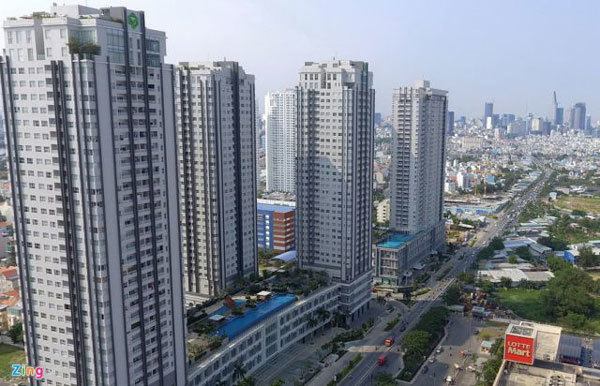 |
The city has mapped out four underground to be built with investments from the private sector. These underground parking space projects include parking lots under the Le Van Tam Park, the one under Tao Dan Park, the one under the Trong Dong Stage and the parking lot under the Hoa Lu Stadium. All these parking lots are situated in District 1.
Parking lots on paper
With total investments about VND1,748 billion (more than US$75 million), the parking space under Le Van Tam Park can accommodate 1,300 cars and 2,000 motorbikes. Although construction of the park's underground parking space began in 2008, the developer of the project has yet announced the sources of finance for the project.
In 2009, the HCM City People’s Committee signed build-operate-transfer (BOT) contract and granted licence to the Investment and Development for Underground Space Corporation (IUS).
In March, 2017, the Department of Transport and relevant agencies completed all essential paper work and the investors promised to start the work in the end of 2017. Nevertheless, IUS has not finished technique design, plans to remove trees and construction licence.
The other parking space projects are the one at Hoa Lu Stadium with an estimated investment of VND3 trillion to provide parking space for 2,550 cars and 2,870 motorbikes.
With investments of VND740 billion, the 10-level Trong Dong can accommodate 890 cars and 400 motorbikes.
The parking lot at Tao Dan Park can provide parking space for 1,200 cars and nearly 900 motorbikes, with total investment of VND896 billion.
The tardy progress of these projects is one of the reasons behind the disorder at the pavements which have been turned into illegal parking lots in inner districts.
Investors demand preferential policies
According to Vu Xuan Nguyen, head of the Division for Management of Transportation Work Construction at the HCM City's Department of Transport, relevant agencies have created favourable conditions for investors/developers to step up these projects. However, they have as yet completed procedures to start construction of most projects.
They have neither announced the sources of funding for most of these projects, said Nguyen.
According to developers, the long time for returns of their investments (in these underground parking space projects) has made them seriously reconsider their investment decisions.
Investors demand preferential policies on taxes including land use taxes, bank loans, and parking fees which have as yet been issued.
Locating underground parking lots at parks would have negative impacts on the environment, especially on urban waste water drainage, said experts.
Meanwhile, newly-built underground parking lots would not match with the rising numbers of private cars and motorbikes.
Transport experts said that the authorities should be more determined in running underground parking garages. For licensed projects run by incapable investors, the government will do it while BOT projects could apply the PPP (public-private partnership) scheme.
VNS
 To have more parking place, HCM City has mapped out many underground parking lots. However, most of these projects remain on paper.
To have more parking place, HCM City has mapped out many underground parking lots. However, most of these projects remain on paper.